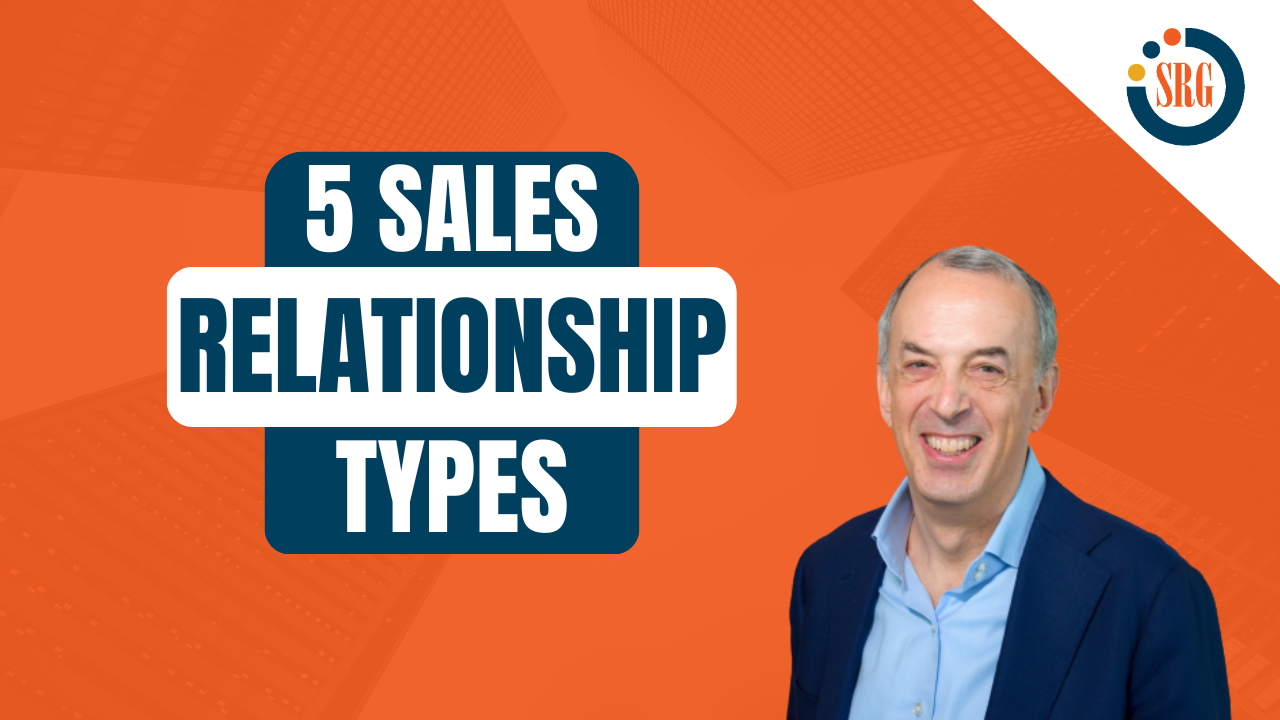Let's take a moment to think about the kind of relationship you have with your typical client.
Do you have access to high-level decision-makers? Or are you stuck talking to gatekeepers and technical buyers?
Do you struggle to differentiate your products and services? Are your buyers raising price objections?
In day-to-day selling, we're not thinking about the "kind" of relationship we have with our clients. But these can affect your sales performance, e.g. the length of your sales cycle, pricing pressure, and the number of companies with which you have to compete.
The Sales Relationship Ladder
To go over the different types of sales relationships, imagine a ladder with five rungs.
#1 Spectator
At the bottom of the ladder, there are accounts in which there is no sales relationship. Your contacts often mention your competitors or don't see the need for what you offer. Also, you have limited access to the account—only low-level contacts, and gatekeepers.
#2 Vendor
In this rung, you and your competitors are on an equal playing field with the account. No one has a significant advantage over the other. And like the Spectator, you also have limited access to the account.
#3 Preferred Provider
A better situation than the Vendor relationship is when you're the Preferred Provider. You often show the client how your products or services can have a positive effect on their business. The client sees you as a consultant. They give you a larger share of their business than your competitors. And you have access to low- and middle-level decision-makers and influencers.
#4 Business Consultant
A big step in the quality of your sales relationship.
Like the Preferred Provider, the client sees you as a consultant of your products or services. But they also trust you to give them solid advice on how to be more productive and profitable. They look to you to help them reach their long-term goals.
In these accounts, you have access to all, if not most decision-makers and influencers.
#5 Partner
The highest level of sales relationships.
Your organization is helping the account with a critical aspect of their business. In doing so, you're bringing a bottom-line value that they can't achieve without you. And as an integral part of their business, in some cases, they may even outsource entire functions or departments to your organization.
At this level, you have access to top-level decision-makers.
How to Improve Your Sales Relationships
In sales, it's common to first think about our products or services. It's what we want to sell, so it's what we have top-of-mind during a sales call.
But the problem with this approach is that it focuses the discussion on the product rather than the buyer. So to improve your sales relationships, the first step is to be proactive.
You can do this by identifying ways you can help your clients solve their problems. That means investing a significant amount of time in sales training and helping your team get ready for every sales call. For example: researching the account's business initiatives, organizational structure, business trends, and competitive environment.
An easy way to think about your client's potential problems is by using the acronym IMPACT.
Image: For some buyers, improving their image is an important strategic initiative. For example, “We want to be the premier provider of…”
Money: Generating more revenue or reducing expenses is, of course, a common business driver.
Productivity: Many buyers are looking for solutions to help them boost productivity by saving time or lowering labor cost.
Advantage: Achieving or maintaining a competitive business advantage is another critical need.
Customer Satisfaction: Customer retention is another common business concern.
Total Cost of Ownership: This can mean reducing maintenance or operating expenses, reducing implementation or training costs, or improving ease of use.
In conclusion, the more time you spend focusing on your client's problems, the higher you'll be on the sales relationship ladder.
💬 Join the Conversation
How do you approach building and maintaining relationships with your customers? Share your tips and experiences here.


